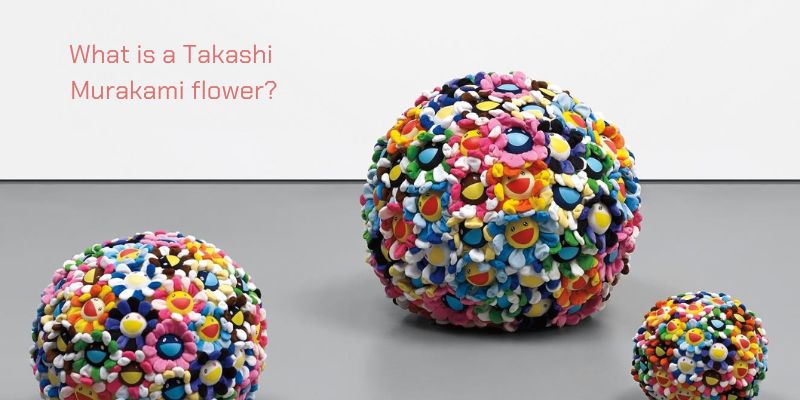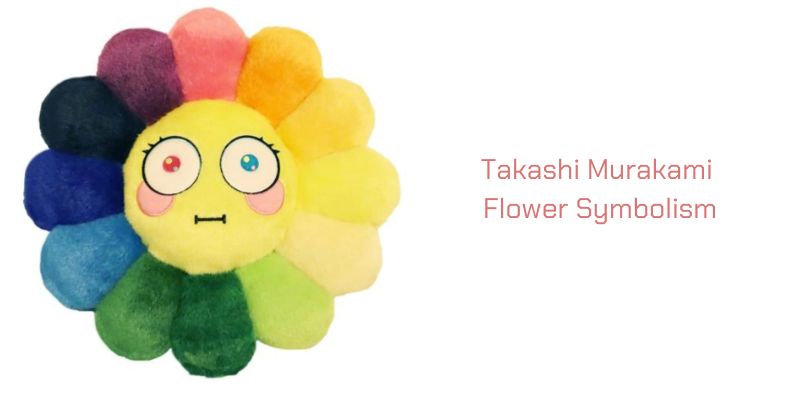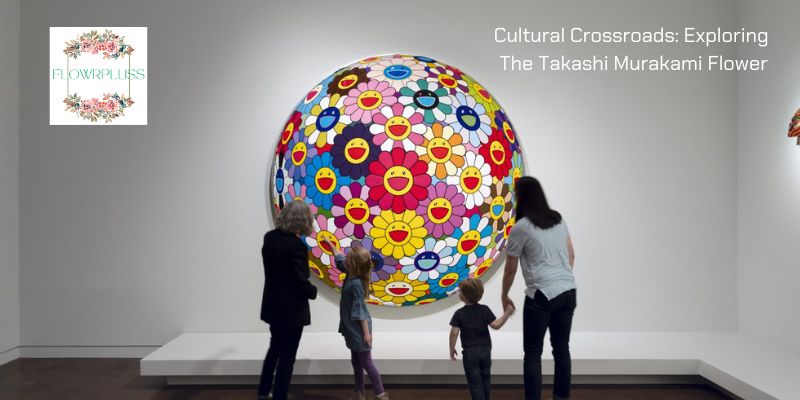The world of art has never been the same since Takashi Murakami, a well-known modern artist from Japan, began producing such colorful and distinctive works. The brilliant and whimsical flower is one of his most well-known motifs. In this investigation, we explore the world of the Takashi Murakami flower, revealing its symbolism, its development, and the significant influence it has had on modern art. In the art world, the Takashi Murakami flower has come to represent happiness and optimism thanks to its fun yet thought-provoking style. We examine the genesis of this iconic image, tracing its origins in Japanese culture and demonstrating how it became a phenomenon that spread throughout the world in this post.
What is a Takashi Murakami flower?

The well-known Takashi Murakami flower has probably been featured somewhere, whether it is in a magazine, a celebrity’s house, or an online post. The iconic laughing flower is recognizable for its distinctive variants, colors, and alluring appearance.
Some people may be overthinking things or appear to be unfamiliar with the art world if they don’t comprehend why it’s so popular. Murakami is also well known for his contribution to Kanye West’s Graduation album cover.
A famous design or picture of a famous person is a common trait among artists over many generations and forms an important part of their professional identity. Keith Haring’s dancing figures and doodle-like characters, Andy Warhol’s iconic Campbell’s Soup Can, and Blek Le Rat’s iconic rat figurines are all notable examples of Pop Art.
Takashi Murakami flower’s cheerful, vibrant floral design has sort of made him famous in the art world. Don’t get me wrong, Murakami is a fantastic artist and has produced other excellent works, but his most renowned work is the flower. What’s not to love about how happy, adorable, and colorful flowers are? And, to put it mildly, pop culture is completely infatuated with it.
Takashi Murakami Flower Symbolism

Murakami uses flowers as strong metaphors to express a variety of ideas and feelings that are essential to his artistic vision. His floral arrangements radiate light, giving his work a mood of hope even in the midst of tragedy and suffering.
The flower that is grinning and is closed-eyed represents happiness and enthusiasm. Murakami’s individual experiences are represented in the flowers’ hidden tears, which also evoke the collective trauma of the Japanese people. Murakami, a contemporary Japanese artist, uses bright flowers that emerge from the wreckage after earthquakes and tsunamis to express hope and resiliency and to represent the possibility of renewal.
Insporation From Japinese Superflat art
Talking about Takashi Murakami would be difficult without bringing up the phrase he coined, “Superflat.” Takashi Murakami established the Superflat postmodern art music movement. Japan’s long tradition of flat art served as an inspiration for Superflat.
The 2D pictures of manga and anime, which are both significant to Japanese culture, have a significant influence on it as well. Additionally, the greater otaku culture in Japan served as inspiration. Pop culture aficionados, especially individuals who are infatuated with anime and manga, are referred to in this.
Superflat, like pop art, blurs the barriers between high and low culture by turning commercial goods into works of art. According to Murakami, the line between high art and low art has become increasingly blurry, defining Japanese culture.
This implies that it is difficult to tell them apart from one another. Murakami has made a significant contribution to the Japanese Superflat art movement and helped to popularize it. In the same way that Andy Warhol and Roy Lichtenstein popularized the Pop Art trend in the 1990s.
Bold, cartoonish contours and flat colors are hallmarks of superflat art. Practically little natural depth or perspective exist. A good illustration of this is Murakami’s Celestial Flowers. Although paintings and sculptures are the most widely used Superflat art forms today, the movement has had a big impact on fashion, design, and other forms of expression.
Various flat forms that can be seen in Japanese graphic arts can be characterized as superflat. Japanese trends such as Anime and Magna have impacted the movement. Japanese manga, graphic arts, animations, popular culture, and fine arts are all a part of Takashi Murakami flower’s Superflat Art Movement. The prominent artists whose work is regarded as Superflat include Takashi Murakami, Chiho Aoshima, Mahomi Kunikata, Sayuri Mishima, Yoshitomo Nara, and Aya Takano.
Meaning of the Takashi Murakami Flower

Beyond flowers, these Murakami Flower illustrations depict other things. Murakami’s Flowers, which is a collection of short stories, contains unspoken tears. There are numerous presumptions about what the smiling flower that appears in smiley anime implies.
However, the artist acknowledged in a 2005 New York Times story that his smiling Flowers were a manifestation of the suppressed feelings and collective trauma felt by Japanese citizens following the 1945 Hiroshima-Nagasaki explosions. the most horrific incidents to ever occur in Japan. Murakami aimed to shed light on what occurred and how certain people in Japan are still affected by this disaster today.
The Takashi Murakami flower’s Evolution
Murakami made a significant contribution by examining the meeting point of high and low culture, which gave rise to his enduring floral motif. The flowers took on a more direct and cartoon-like aspect as he adopted manga and anime influences.
Murakami eventually created the trademark Murakami blossoms design, which features many blossoms per stem set against vividly colored backgrounds, through rigorous experimenting with colors, textures, and sizes.
Criticism and Display
In addition to the Museum of Contemporary Art in Los Angeles and the Museum of Fine Arts in Boston, the artist has drawn recognition for exhibiting his floral-themed artwork in prestigious galleries and museums across the world. Their participation in important art exhibitions like Art Basel and the Venice Biennale raises their aesthetic worth and relevance even further.
Murakami’s works on flowers have been criticized from a variety of angles; some find them intriguing and joyful, while others find them to be overly frivolous and commercialized. Murakami’s flowers continue to be incredibly famous and sought-after in the art world despite these conflicting viewpoints.
In conclusion, the Takashi Murakami flower is a colorful and timeless representation of modern art, joy, and intercultural fusion. Through this investigation, we have delved into the origins of this enduring motif, tracing its roots to Japanese culture and observing its development into a universal phenomena. Takashi Murakami flower is more than just a striking visual; it also stands for the blending of history and modernity, a link between the East and the West, and a celebration of the appeal of art to all people. Its dazzling petals and quirky personality inspire visitors to embrace the happiness and hope that art may bring to our life.


